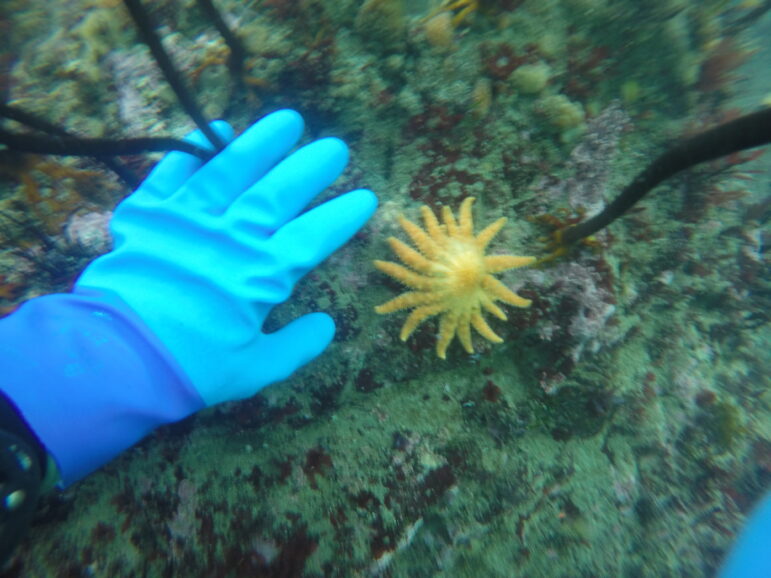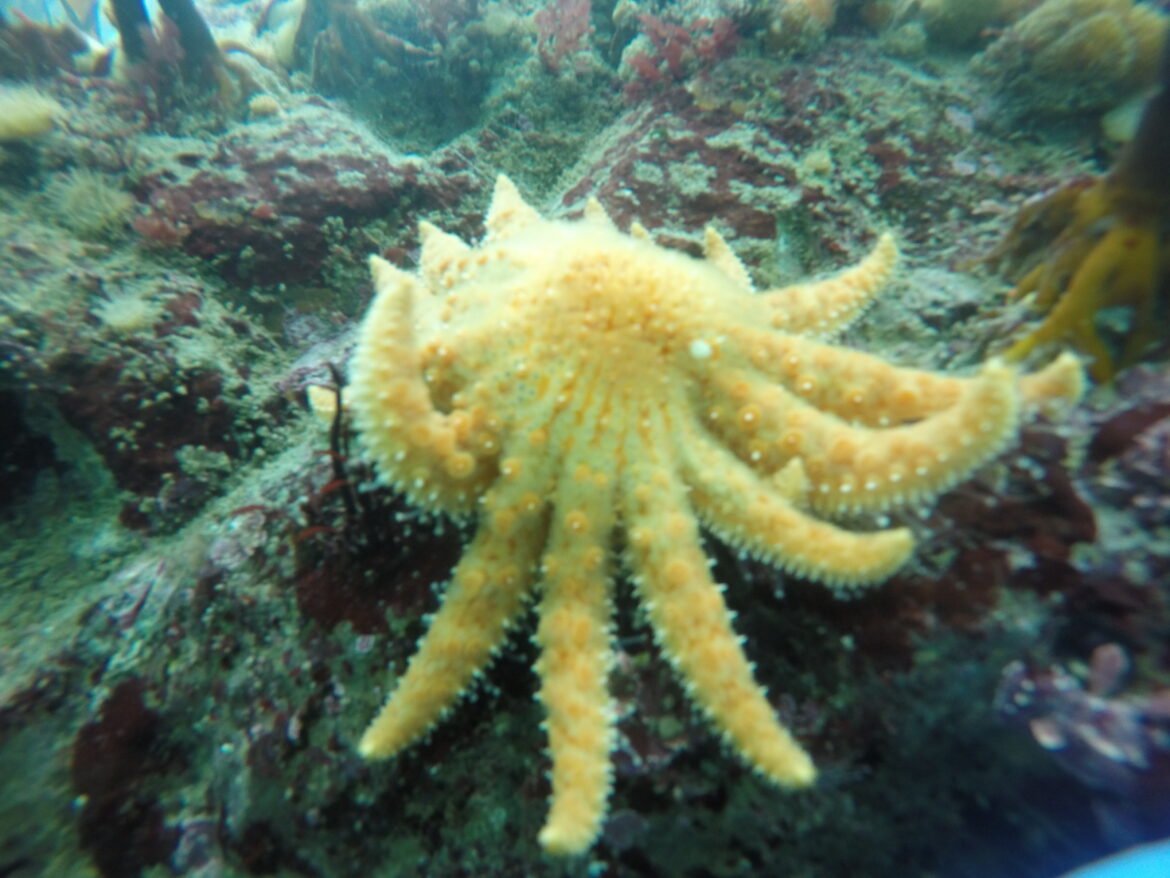FORT BRAGG, CA, 4/5/23 — Fort Bragg professional urchin diver Grant Downie spotted another sunflower sea star off the Mendocino coast last week, following his December sighting of one of the now-rare star species. Downie’s video of this spring sighting amassed dozens of comments as people rejoiced to see the star, which has seen population declines of between 80 and 100% across its West Coast range after an outbreak of Sea Star Wasting Syndrome a decade ago.
Sunflower sea stars (Pycnopodia helianthoides) are a critical part of our underwater ecosystem; their decline, which scientists attribute in part to rapidly warming waters and pollution, led to a population boom in purple urchin, for which sunflower stars are a natural predator. Purple urchin eat bull kelp and have no other predator — not even fisheries, as there is no commercial market for them — meaning that this ecosystem out of whack has led to extreme bull kelp decline off Mendocino County shores.
Downie found the sea star while searching for commercial-quality red sea urchin — and though that was in short supply, he was glad to see that the seafloor looked to be in better shape than other “urchin barrens.”
“The area was mostly healthy reefs with Pterygophora [californica, or stalked kelp],” he wrote in an email to The Mendocino Voice. “The density of purple urchins wasn’t as high or as barren as the last star I found.”
Downie spotted this star about three miles north of Noyo Harbor, and said it was further from the beach than his December sighting. The star was about 300 feet from the beach in about 18 feet of water; stars are often found in the intertidal zone or even in tide pools, but have also been seen as deep as 1,427 feet. Downie said this star was about 7 inches across; with 14 arms, it may be a juvenile, as these stars can measure up to 3.3 feet across with up to 24 arms.

“[T]here isn’t much surviving kelp after all these winter storms and the algal growth is low this year, proving to be hard for the North Coast commercial urchin industry to find any good quality urchins,” he wrote. “Personally I’ve made numerous dives in a day for a few days just looking for quality but not turning in any urchins to sell; this star was found on one of those days, bringing a bit of hope to a gloomy situation.”
Recovery efforts for sunflower sea stars could foster regrowth of Mendocino County’s kelp forests — that’s why a recent proposed ruling to list sunflower sea stars as “threatened” under the Endangered Species Act (ESA) is such a big deal.
Should the ruling pass, “we [would have], really, the full weight of the U.S. federal government behind recovering the species,” Vienna Saccomanno, an ocean scientist with The Nature Conservancy (TNC) told The Voice in March. TNC has pulled together a tremendous amount of science and data for a Roadmap to Recovery for the Sunflower Sea Star, exploring solutions to bring the critical species back.
See video of Grant Downie’s sighting on his Instagram. Plus, check out our past coverage of the potential ESA listing, the search for sunflower sea stars on the North Coast, Downie’s December sighting, the struggling red urchin industry, and kelp restoration efforts in Mendocino County.
Note: Kate Fishman covers the environment & natural resources for The Mendocino Voice in partnership with a Report For America. Her position is funded by the Community Foundation of Mendocino, Report for America, & our readers. You can support Fishman’s work with a tax-deductible donation here or by emailing [email protected]. Contact her at KFishman@mendovoice.com or at (707) 234-7735. The Voice maintains editorial control and independence.




Typo: that second photo with his hand isn’t an urchin, it’s the sea star!